World's First National Park, world record in Wyoming
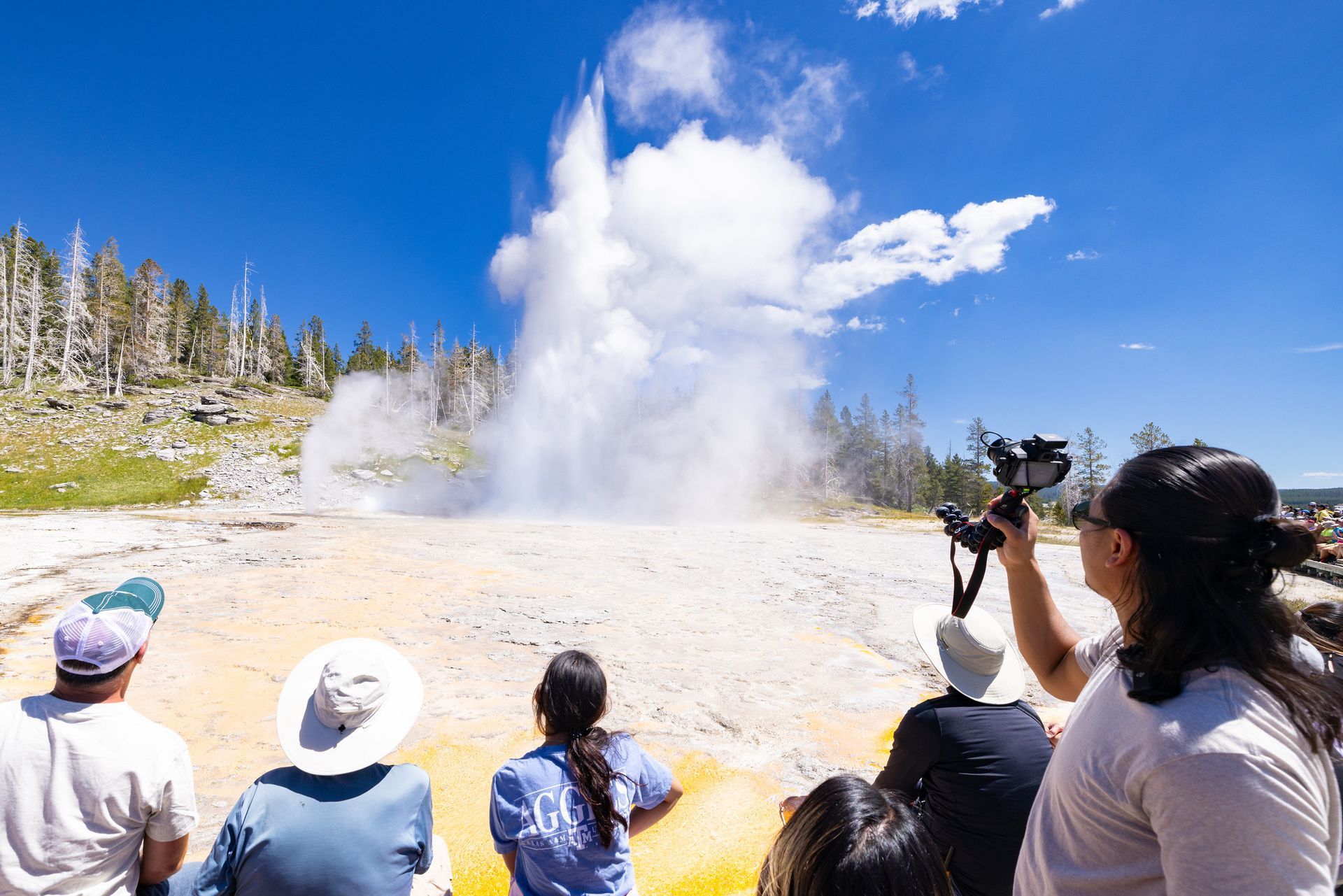
Yellowstone National Park, Wyoming, United States--Yellowstone National Park, a national park located in the western United States, largely in the northwest corner of Wyoming and extending into Montana and Idaho, is known for its wildlife and its many geothermal features, especially the Old Faithful geyser; it spans an area of 3,468.4 sq mi (8,983 km2), comprising lakes, canyons, rivers, and mountain ranges and sets the world record for being the World's First National Park, according to the WORLD RECORD ACADEMY.
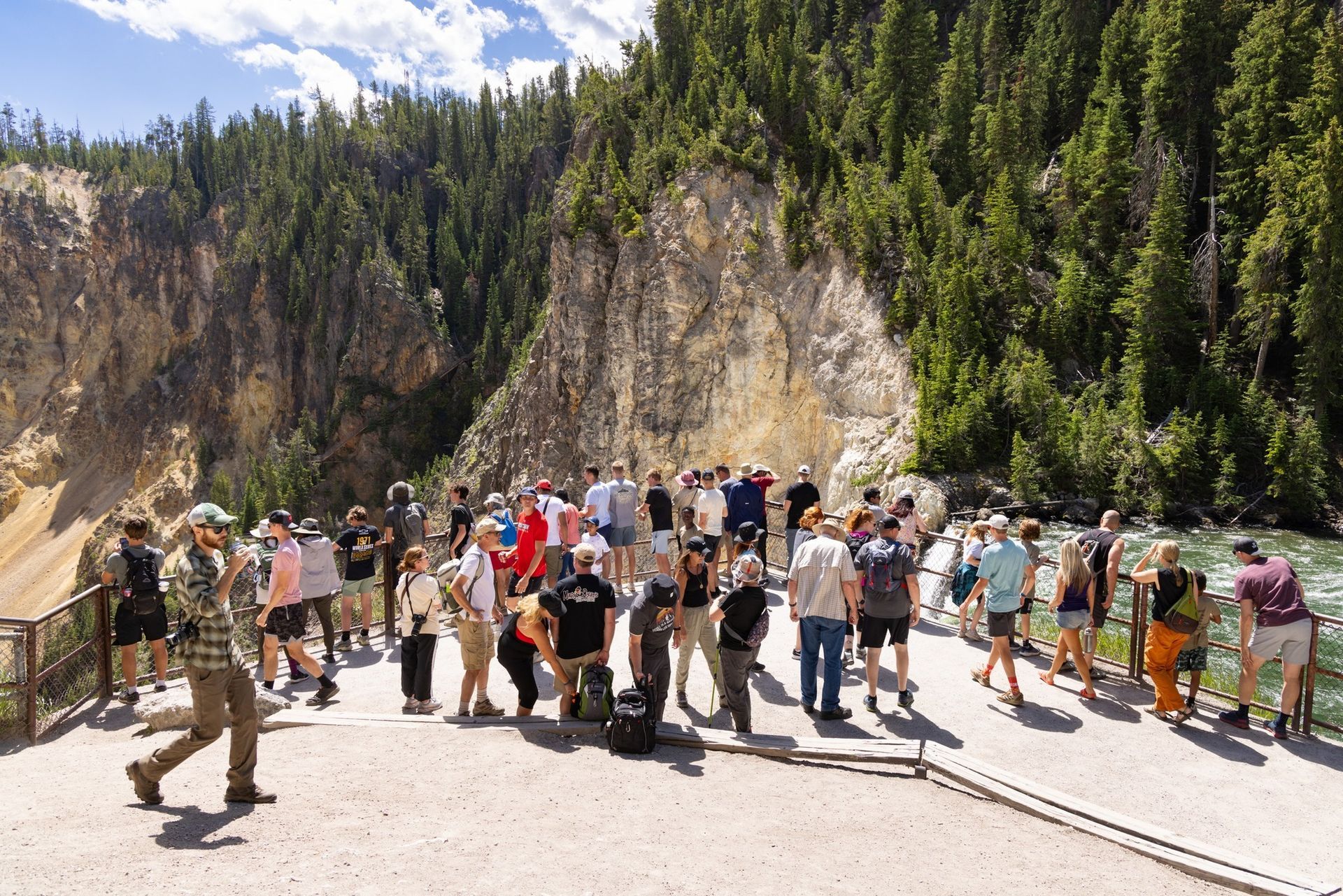
The World's First National Park
"On March 1, 1872, Yellowstone became the first national park for all to enjoy the unique hydrothermal and geologic features. Within Yellowstone's 2.2 million acres, visitors have unparalleled opportunities to observe wildlife in an intact ecosystem, explore geothermal areas that contain about half the world’s active geysers, and view geologic wonders like the Grand Canyon of the Yellowstone River," the official website says.
"The national park idea was part of a new view of the nation’s responsibility for the public domain. By the end of the 1800s, many thoughtful people no longer believed that wilderness should be fair game for the first person who could claim and plunder it. They believed its fruits were the rightful possession of all the people, including those yet unborn. Besides the areas set aside as national parks, still greater expanses of land were placed into national forests and other reserves so the United States’ natural wealth—in the form of lumber, grazing, minerals, and recreation lands—would not be consumed at once by the greed of a few, but would perpetually benefit all.
"The preservation idea spread around the world. Scores of nations have preserved areas of natural beauty and historical worth so that all humankind will have the opportunity to reflect on their natural and cultural heritage and to return to nature and be spiritually reborn. Of all the benefits resulting from the establishment of Yellowstone National Park, this may be the greatest."
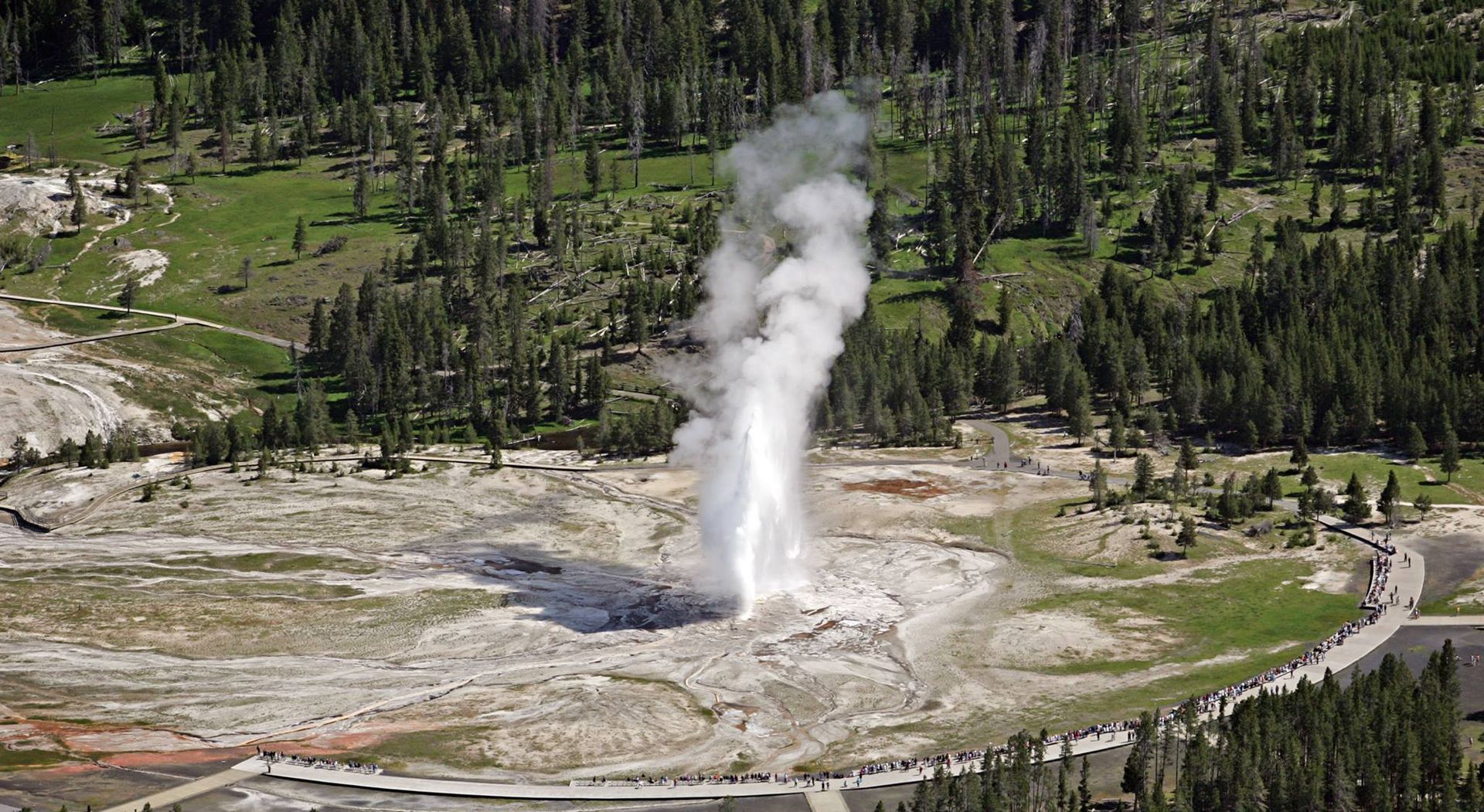
"Yellowstone National Park is a national park located in the western United States, largely in the northwest corner of Wyoming and extending into Montana and Idaho. It was established by the 42nd U.S. Congress with the Yellowstone National Park Protection Act and signed into law by President Ulysses S. Grant on March 1, 1872. Yellowstone was the first national park in the U.S. and is also widely held to be the first national park in the world. The park is known for its wildlife and its many geothermal features, especially the Old Faithful geyser, one of its most popular. While it represents many types of biomes, the subalpine forest is the most abundant. It is part of the South Central Rockies forests ecoregion.
"Yellowstone National Park spans an area of 3,468.4 sq mi (8,983 km2), comprising lakes, canyons, rivers, and mountain ranges. Yellowstone Lake is one of the largest high-elevation lakes in North America and is centered over the Yellowstone Caldera, the largest super volcano on the continent. The caldera is considered a dormant volcano. It has erupted with tremendous force several times in the last two million years. Well over half of the world's geysers and hydrothermal features are in Yellowstone, fueled by this ongoing volcanism. Lava flows and rocks from volcanic eruptions cover most of the land area of Yellowstone. The park is the centerpiece of the Greater Yellowstone Ecosystem, the largest remaining nearly intact ecosystem in the Earth's northern temperate zone. In 1978, Yellowstone was named a UNESCO World Heritage Site.
"Hundreds of species of mammals, birds, fish, reptiles, and amphibians have been documented, including several that are either endangered or threatened. The vast forests and grasslands also include unique species of plants. Yellowstone Park is the largest and most famous megafauna location in the contiguous United States. Grizzly bears, cougars, wolves, and free-ranging herds of bison and elk live in this park. The Yellowstone Park bison herd is the oldest and largest public bison herd in the United States. Forest fires occur in the park each year; in the large forest fires of 1988, nearly one-third of the park was burnt. Yellowstone has numerous recreational opportunities, including hiking, camping, boating, fishing, and sightseeing. Paved roads provide close access to the major geothermal areas as well as some of the lakes and waterfalls. During the winter, visitors often access the park by way of guided tours that use either snow coaches or snowmobiles." (Wikipedia)
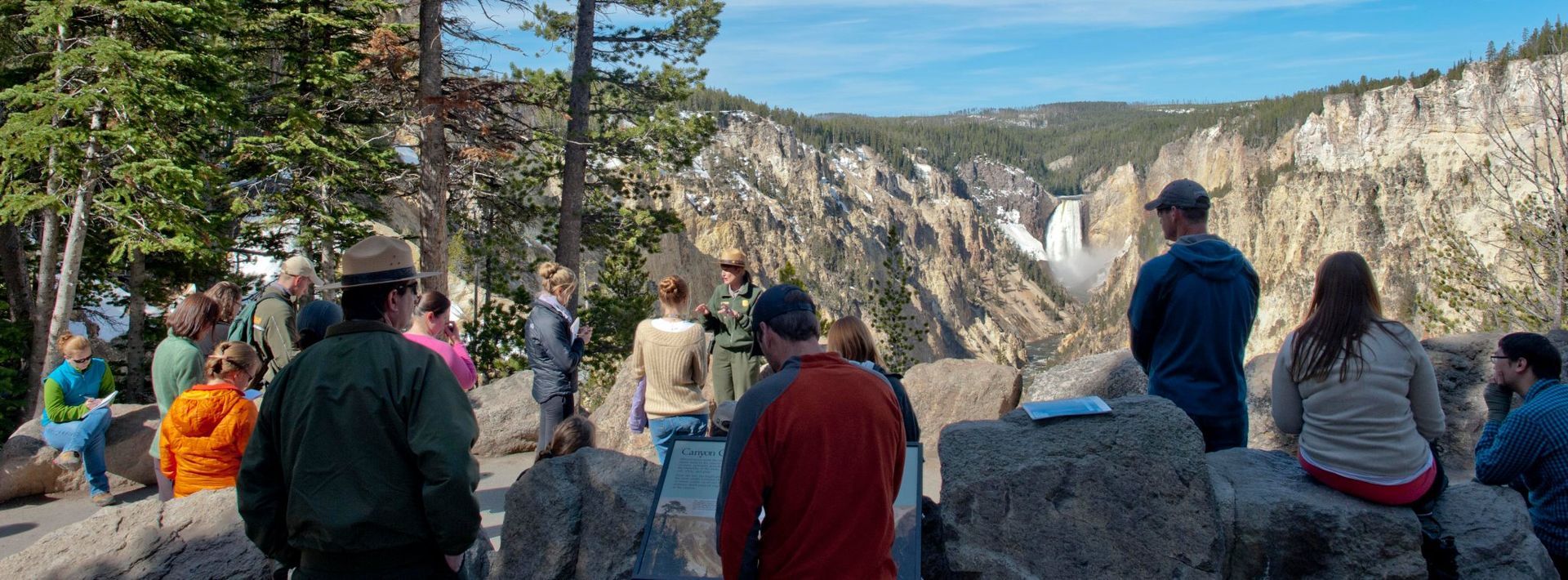
"The “first national park” was born 151 years ago, on March 1, 1872, when President Ulysses S. Grant signed into law the Yellowstone National Park Protection Act," the
USA Today Travel says.
"Yellowstone National Park is one of the largest and best-known parks in the country, covering nearly 3,500 square miles in Wyoming, Montana and Idaho.
"It sits atop a volcanic hot spot with about half the world’s active geysers and is home to the greatest concentration of hydrothermal features in the world."

"There are 63 national parks in the United States, but none has captivated the American imagination quite like Yellowstone National Park, the very first of its kind. The park encompasses more than 2 million acres across Wyoming, Montana and Idaho, and showcases unique natural features and stunning wildlife. But without the efforts of a dedicated few, it might never have existed at all," the History Channel says.
"But the ideas on which Yellowstone was founded—public access, enjoyment of nature, and conservation of wilderness—took root in the American imagination, and inspired the creation of subsequent national parks across the United States and around the world.
"The first reported non-Native visitor to Yellowstone was John Colter, a member of the Lewis & Clark Expedition, who explored some of the region in the winter of 1807 and 1808 in pursuit of trapping and fur trading opportunities."

"There is an origin story about Yellowstone National Park that involves weary explorers sitting around a campfire, extolling the beauty of the land they’ve just seen and vowing to ensure it becomes a public park for all to enjoy. It’s a vision of altruism and environmentalism that suits the founding of the world’s first national park only it’s not entirely true," the LIFE Magazine reports..
"In March of 1872, less than two years after the expedition, Congress enacted the Yellowstone Park Act, ensuring that the land would remain under the purview of the Department of the Interior rather than being divvied up among private individuals—an arrangement that would attract visitors to the area, which would be sure to benefit big business like the railroad company.
"More than 70 years into the park’s existence, LIFE dispatched Alfred Eisenstaedt to photograph its geographic features, during a summer that was shaping up to be Yellowstone’s biggest yet for tourism. In that record year, 1946, the park had more than 800,000 visitors. In 2018, it had 4.1 million visitors. Though the idea might seem incongruous, all of the many millions of people who over the decades have encountered Yellowstone’s bison and watched Old Faithful blow have corporate interests to thank for one of America’s greatest natural wonders."
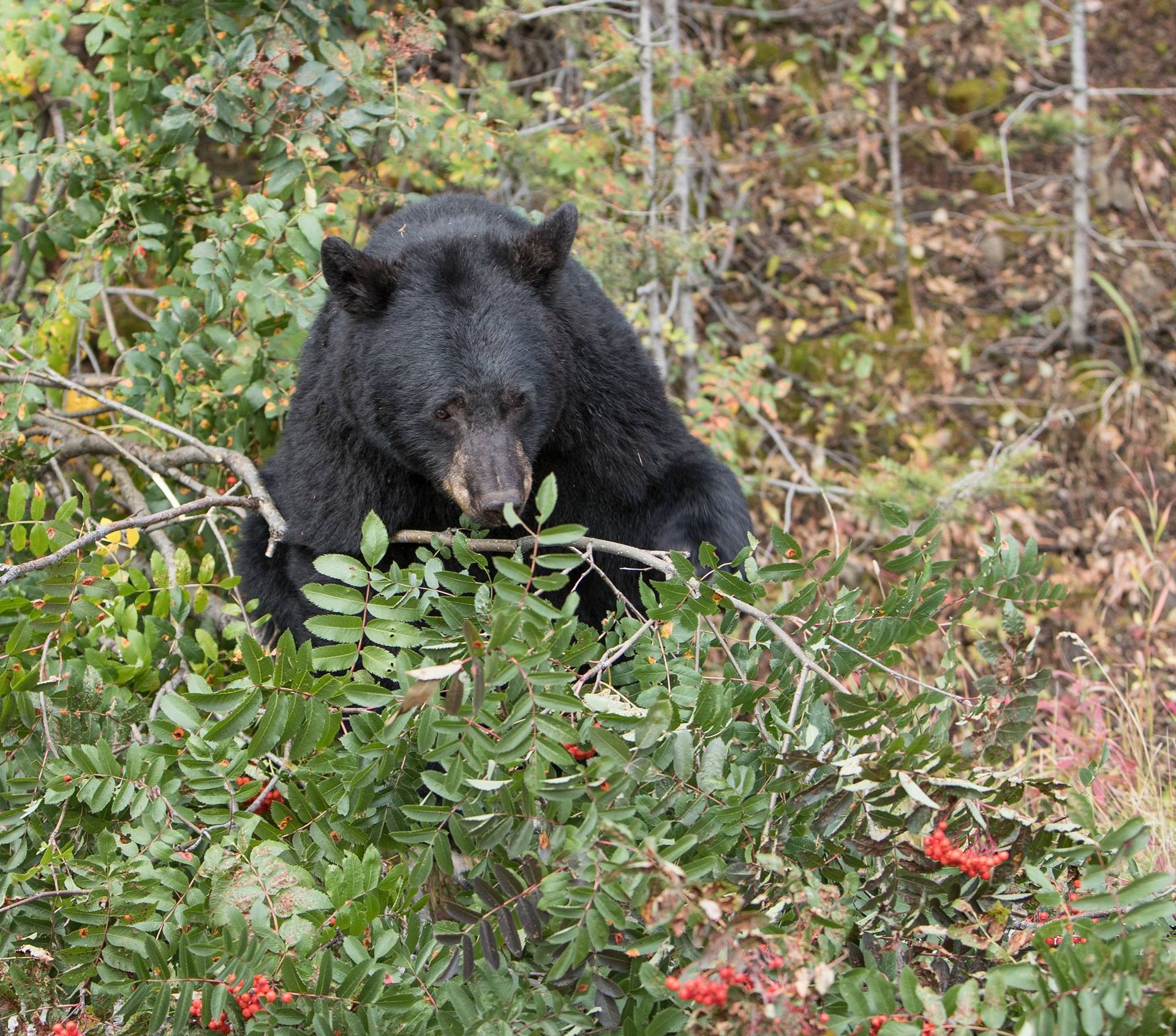
"Established in 1872 and located primarily in Wyoming, Yellowstone National Park was America's first national park. To this day, Yellowstone remains one of the country's most popular national parks with millions of annual visitors. Yellowstone spans almost 3,500 miles, and extends into parts of Montana and Idaho, making it one of the largest national parks in the US," the
National Park Foundation says.
"Yellowstone National Park sits on top of a dormant volcano and is home to more geysers and hot springs than any other place on earth. Wonders abound at this truly unique national park, from sites like the Yellowstone Grand Canyon to wildlife like America’s largest buffalo herd, grizzly bears, and wolves.
"Approximately 50 percent of the world’s hydrothermal features are at Yellowstone National Park, creating an effect that makes the ground appear to be on fire. The most famous of all the geysers is Old Faithful, one of the most popular and recognized natural wonders in the United States."
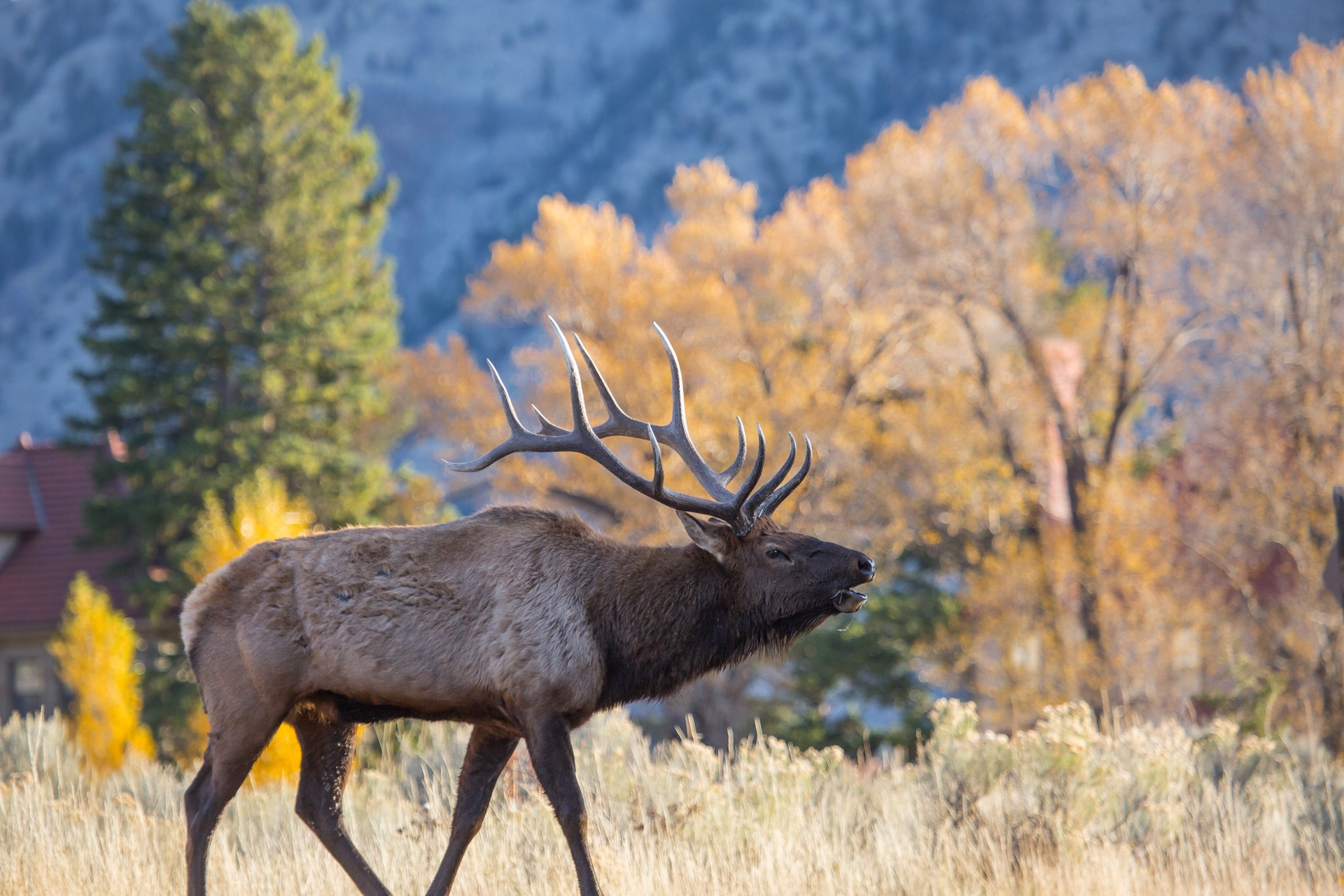
"The first organized exploration of the Yellowstone area was the Cook-Folsom-Peterson Expedition in 1869, a privately funded, 3-member team of gold miners from Diamond City, MT. The party witnessed the grandeur of the Grand Canyon of the Yellowstone and followed numerous rivers, such as the Firehole and the Madison, over their 36-day adventure. Otherwise, little is preserved from this initial expedition, although it served as inspiration for the next expedition, the Washburn-Langford-Doane Expedition of 1870," the United States Geological Survey says.
"During this subsequent journey into the Yellowstone region, Henry Washburn and Nathaniel P. Langford, guided by the U.S. Army escort of Lt. Gustavus C. Doane, carried with them the journals of the Cook-Folsom-Peterson Expedition, even following their route south into the region from Montana. The group created numerous maps and detailed observations of the area, explored the Lower and Upper Geyser Basins, and even gave Yellowstone’s most famous attraction its one-of-a-kind name: Old Faithful.
"Finally, the Hayden Geological Survey of 1871, led by geologist Ferdinand Vandeveer Hayden, carried a 32-member, federally funded expedition into the heart of Yellowstone territory with the goal of fully characterizing this region of geologic splendor. This group included artist Thomas Moran, whose paintings of Yellowstone’s unmatched beauty were seminal in spurring federal protection of the park the following year."
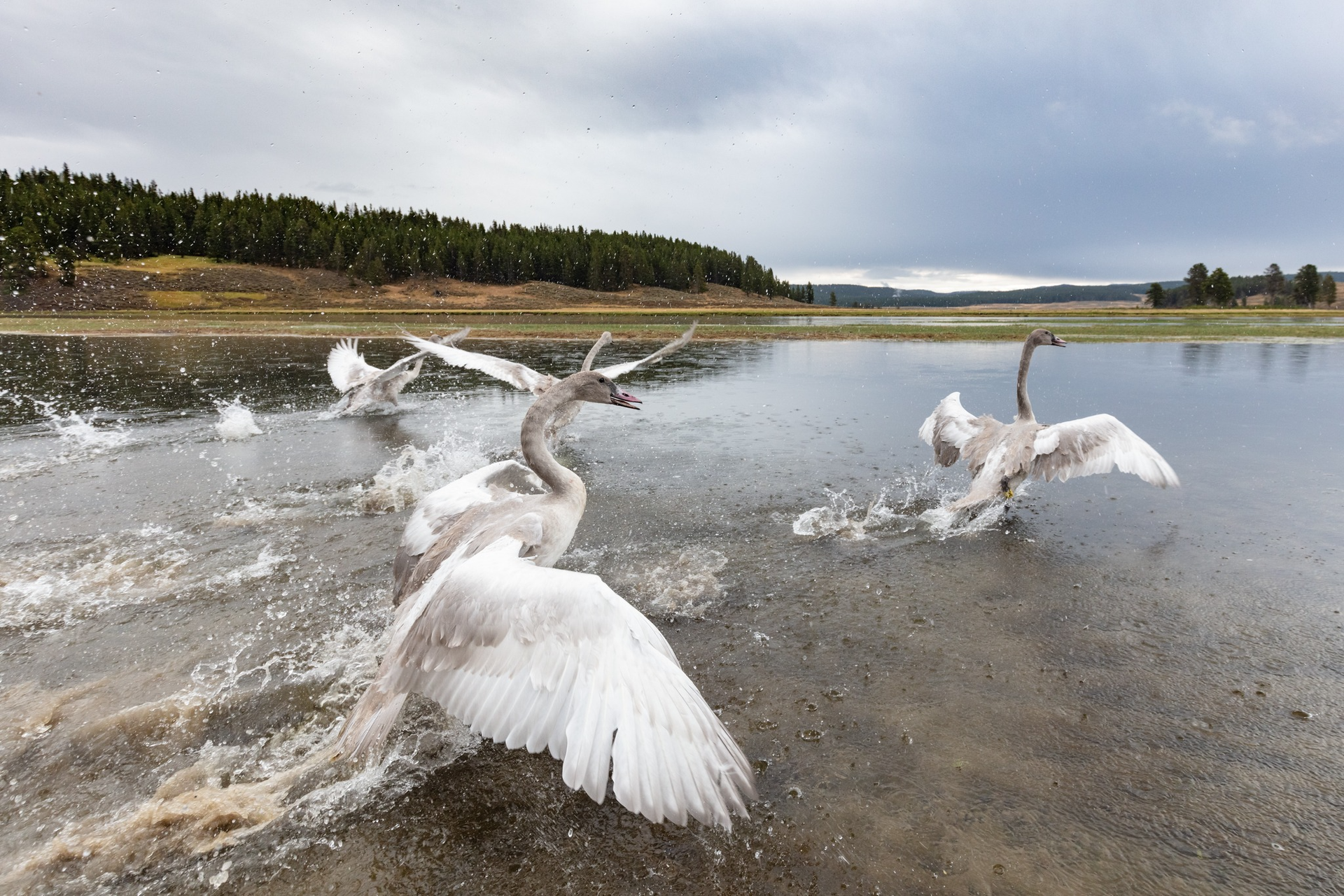
"Public knowledge and the popularity of the wilderness paradoxically posed a threat to its survival. The settlement and commercialization of western lands inevitably followed their opening. Leaders of the four major government surveys, while promoting settlement actively, were nonetheless alarmed by the abuses of settlement: monopoly of water rights, speculation by land rings, and mistreatment of Americans Indians on reserved lands. Years before Theodore Roosevelt and the era of Progressives, these public servants formulated guidelines for prevention or reformation of abuse, fought for and erected the structures of bureaus and commissions to advance their agenda, and trained experts in the science and social sciences who would be agents of reform," the
National Archives says.
"One of the most imaginative and uniquely American responses to the endangered wilderness was the invention of the national park system. In 1864, the State of California reserved Yosemite as a parkland. The federal government followed shortly afterward. Early trappers and army explorers had been profoundly impressed by the upper reaches of the Yellowstone River, a region called Colter’s Hell.
"Ferdinand Hayden surveyed the area in 1871. Upon his return to the East, he mounted a campaign to promote, but also to protect, the natural wonders he had seen. He quickly wrote a well-received article for Scribner’s Monthly that included fellow expedition member Thomas Moran’s illustrations. He provided Charles Bierstadt, brother to the artist and a leading manufacturer of stereographic cards, with copies of William Jackson’s expedition photographs. He lobbied members of Congress by presenting them with an album of Jackson’s Yellowstone photographs. He was supported in his effort by Jay Cooke, the railroad magnate who anticipated increased tourist ridership on his lines serving the Yellowstone area.
"On March 1, 1872, Congress passed into law the act creating Yellowstone “a public park or pleasuring-ground for the benefit and enjoyment of the people.”
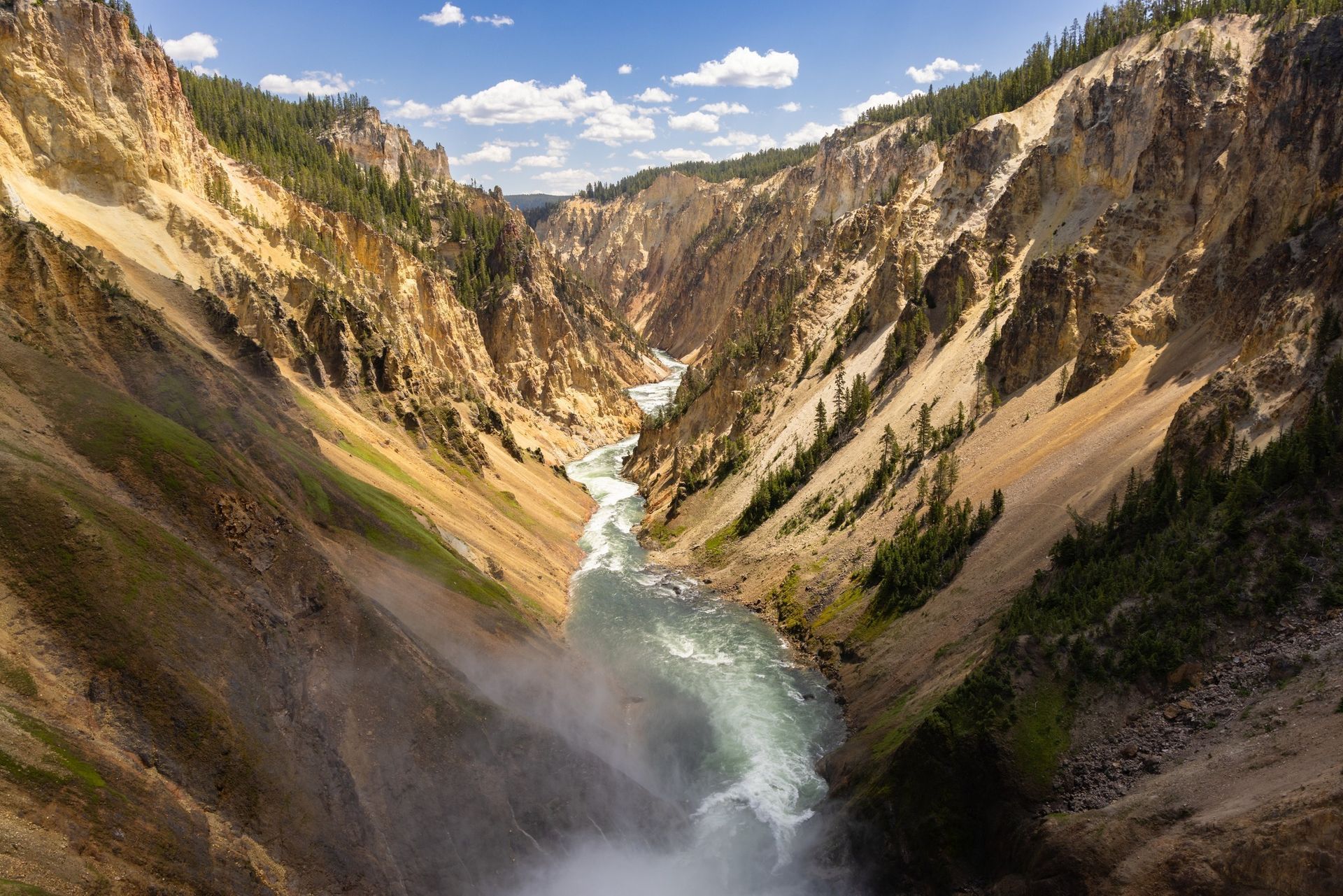
"The park consists of 2.2 million acres of land, allowing visitors to immerse themselves in nature, explore the geothermal areas that include half of the world's geysers and visit the Grand Canyon and the Yellowstone River," the
CBS News says.
"Yellowstone National Park, at 28,000 square miles, is one of the world's largest, nearly intact temperate-zone ecosystems, preserving a diverse ecosystem of terrestrial, aquatic and microbial life.
"It became the first national park 151 years ago today when President Ulysses S. Grant signed the Yellowstone National Park Protection Act into law."

"The vast natural forest of Yellowstone National Park covers nearly 9,000 km2 ; 96% of the park lies in Wyoming, 3% in Montana and 1% in Idaho. Yellowstone contains half of all the world's known geothermal features, with more than 10,000 examples. It also has the world's largest concentration of geysers (more than 300 geyers, or two thirds of all those on the planet). Established in 1872, Yellowstone is equally known for its wildlife, such as grizzly bears, wolves, bison and wapitis," the UNESCO Heritage Centre says.
"Yellowstone National Park is a protected area showcasing significant geological phenomena and processes. It is also a unique manifestation of geothermal forces, natural beauty, and wild ecosystems where rare and endangered species thrive. As the site of one of the few remaining intact large ecosystems in the northern temperate zone of earth, Yellowstone’s ecological communities provide unparalleled opportunities for conservation, study, and enjoyment of large-scale wildland ecosystem processes.
"At nearly 900,000 hectares, Yellowstone National Park is a large property, and is at the heart of the vast “Greater Yellowstone Ecosystem,” (GYE) encompassing over 7 million hectares. The park, along with the GYE, is one of the last remaining intact large ecosystems in the northern temperate zone. All wildlife species found in the region pre-European contact can still be found in the park. The property itself is of sufficient size to ensure the protection of the scenic, geologic, and geomorphological values for which it was inscribed."

